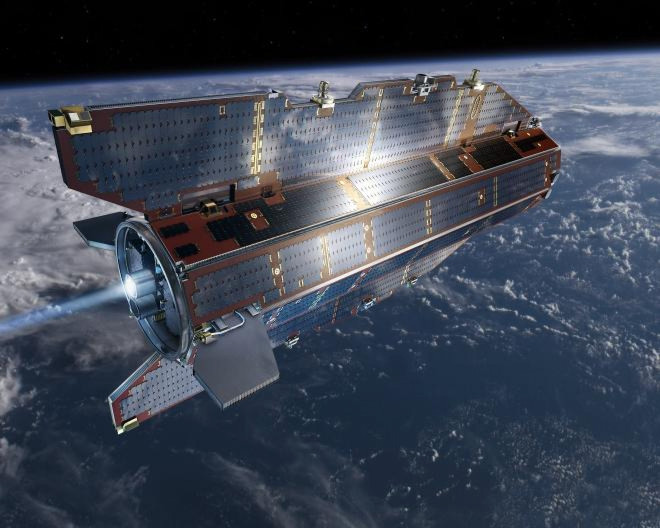Where Did The GOCE Satellite Land? ESA Says Debris Did Not Cause Any Damage [UPDATE]
Update 8:00 a.m.: A resident of the Falkland Islands, Bill Chater, captured the last image of the GOCE satellite before it crashed into the Atlantic Ocean.
ESOC experts confirm - this is #GOCE! MT @Cheds23: We saw GOCE burn up from the Falklands at about 9.20pm last night. pic.twitter.com/DBYsV1n7KR
— ESA (@esa) November 11, 2013
After much speculation about where it would land, the European Space Agency’s GOCE satellite reentered Earth’s atmosphere on Sunday night, around 7 p.m. EST in an area south of the Falkland Islands. Completing an orbit in which streaked past Siberia, the Pacific Ocean, the Indian Ocean and Antarctica, the satellite broke up upon reentry and sent debris crashing to Earth but did not cause any damage, the ESA reports.

ESA knew the Gravity field and steady-state Ocean Circulation Explorer (GOCE) satellite was going to crash back to Earth on Sunday, but the agency was not sure where it would land. ESA believed the satellite would make its reentry in a remote location and there would be little chance of debris hitting anyone. According to ESA, debris crashed "60 degree West and 56 degree South, near the Falkland Islands."
While ESA had international help tracking the satellite, there was still some uncertainty as to where exactly GOCE would land, but they'd ruled out reentry over Europe and predicted a crash into the ocean or the polar regions. Even in the very last moments of the satellite’s trip, it was beaming data back to ground control, with ESA reporting contact at 5:43 p.m. EST. “At an altitude of less than 120 km, the spacecraft is – against expectations – still functional,” said ESA.
GOCE was first launched in 2009 to map Earth’s gravity field, creating a “geoid” of the planet’s oceans as they would look if affected only by gravity. The data collected by GOCE is being used to gain insights into ocean circulation, sea level and the interior of the Earth, notes ESA. The satellite’s accelerometer also acquired valuable data on wind speeds and air density in Earth’s upper atmosphere. GOCE ran out of fuel in October, a natural conclusion that signaled the end of the satellite’s mission.
The one-ton GOCE satellite represents only a fraction of the man-made objects that have reentered Earth’s atmosphere safely over the decades. Heiner Klinkrad, head of ESA’s Space Debris Office, said in a statement, “The one-ton GOCE satellite is only a small fraction of the 100–150 tons of man-made space objects that reenter Earth’s atmosphere annually.” Klinkrad also noted there have been no debris-related human casualties reported in 56 years of spaceflight.
As noted by the Associated Press, the GOCE reentry is nothing compared to the NASA’s Skylab and Russia’s Mir space station crashes. NASA’s Skylab weighed in at 82 tons, crashing into parts of Australia and the Indian Ocean in 1979, while Mir weighed in at 149 tons and splashed down into the Pacific Ocean in 2001. While scientists can predict where such a crash will occur, the new data collected during GOCE’s reentry will help agencies further refine their prediction models, notes AP.
© Copyright IBTimes 2024. All rights reserved.






















